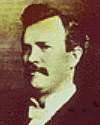
William Seward Burroughs died on 15 Sep 1898 at the young age of 43. Yet, as an American inventor, he had invented the world's first commercially viable recording adding machine and already pioneered its manufacture. With his first practical adding machine, he provided not only the ability to add numbers accurately, and print out the results. The company he co-founded as the American Arithmometer Co. (1886) later became the Burroughs Corporation (1905) and eventually by merger formed Unisys in the 1980s. The excerpt on The Burroughs Adding Machine from the book The City of Detroit (1922) begins by declaring: “There is no story in American industrial history more absorbing, more replete with human interest, than the story of the inventor of the adding machine and his years of disheartening labor to perfect his creation. ... the creative genius and the struggles of one man, whose name is now perpetuated in the title of the company.”

On 15 Sep 1859, Isambard K. Brunel died. His staggering accomplishments in engineering are legendary: bridges, tunnels, railways, ships and more. Today's book pick is: Brunel: The Man Who Built the World (Phoenix Press), by Steven Brindle, which is just one of several available biographies. If you know little about Brunel, you will be well rewarded by reading about the ambition and innovation of this amazingly prolific engineer. By the age of 26, he had been appointed chief engineer of the Great Western Railway, linking Bristol to London. His love of steamships led him to build a series of revolutionary vessels, including the Great Britain—the first steamship to cross the Atlantic. Outstandingly illustrated with a wealth of blueprints, drawings, and rare photographs, this biography tracks the life and achievements of this Victorian-era genius, whose staggering feats continue to influence civil engineering today.
It is available from Amazon, typically about New from $6.90. Used from $2.55. (As of earlier time of writing - subject to change.)
 | Men will not be content to manufacture life: they will want to improve on it. |
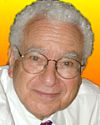 | My colleagues in elementary particle theory in many lands [and I] are driven by the usual insatiable curiosity of the scientist, and our work is a delightful game. I am frequently astonished that it so often results in correct predictions of experimental results. How can it be that writing down a few simple and elegant formulae, like short poems governed by strict rules such as those of the sonnet or the waka, can predict universal regularities of Nature? |
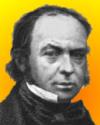 | If the Commission is to enquire into the conditions “to be observed,” it is to be presumed that they will give the result of their enquiries; or, in other words, that they will lay down, or at least suggest, “rules” and “conditions to be (hereafter) observed” in the construction of bridges, or, in other words, embarrass and shackle the progress of improvement to-morrow by recording and registering as law the prejudices or errors of to-day. [Objecting to any interference by the State with the freedom of civil engineers in the conduct of their professional work.] |
| Before you look at today's web page, see if you can answer some of these questions about the events that happened on this day. Some of the names are very familiar. Others will likely stump you. Tickle your curiosity with these questions, then check your answers on today's web page. | |
| Births | |
 | Murray Gell-Mann, born 15 Sep 1929 is an American theoretical physicist who predicted the existance of new subatomic particles, for which he won the 1969 Nobel Prize. What did he call these particles? |
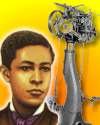 | Jan Ernst Matzeliger, born 15 Sep 1852, was a Dutch Guianian-American inventor known for a machine that replaced hand methods of manufacture of a certain product. He received a patent for his invention on 20 Mar 1883. What was his invention? |
| Deaths | |
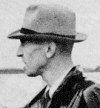 | A German aircraft engineer and designer (1898-1978) during World War 2 supplied the Luftwaffe with its foremost types of combat aircraft. In 1944 he produced the Me262 fighter, the first jet plane flown in combat. Can you name this man? |
 | William Seward Burroughs (1855-1898) was the American inventor of the first recording adding machine. He was the son of a mechanic, but began in what his father regarded as a “gentleman's” vocation. During his first career, William recognized the need for an adding machine, with the ability to print out the calculation. After seven years in that job, which he found not to his liking, he changed to working at a machine shop. Then he had the opportunity to develop and market his idea. Burrough's first job was in which business that needed an adding machine? |
| Events | |
 | On 15 Sep 1998, the rings around the planet Jupiter were explained by studies of the rings made by scientists at several institutions. What origin did they suggest for the rings? |
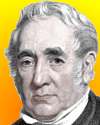 | On 15 Sep 1830, the Liverpool to Manchester line opened in England, built by the inventor of the famous Rocket locomotive with which he had won the Rainhill trials of 1829, a competition as to who could build the fastest locomotive. Can you name this inventor? |
Fast answers for the previous newsletter for September 14: nitric oxide • several centimetres • Sir Peter Scott • Georges Leclanché • Boston • 36 hours.
 If you enjoy this newsletter, the website, or wish to offer encouragement or ideas, please send feedback by using your mail reader Reply button.
If you enjoy this newsletter, the website, or wish to offer encouragement or ideas, please send feedback by using your mail reader Reply button. Your click on a Facebook, StumbleUpon, or other social button on the site webpages is also a welcome sign of appreciation. Thank you for using them.
© This newsletter is copyright 2020 by todayinsci.com. Please respect the Webmaster's wishes and do not put copies online of the Newsletter — or any Today in Science History webpage. (If you already have done so, please remove them. Thank you.) Offline use in education is encouraged such as a printout on a bulletin board, or projected for classroom viewing. Online, descriptive links to our pages are welcomed, as these will provide a reader with the most recent revisions, additions and/or corrections of a webpage. For any other copyright questions, please contact the Webmaster by using your mail reader Reply button.
--
If you do not want to receive any more newsletters, Unsubscribe
To update your preferences and to unsubscribe visit this link
Executive Real Estate Business Class
-
"It was like a man with wings. It wasn't like anything you'd see on TV or in a monster movie." ...
About the publisher
Search This Blog
Blog Archive
-
▼
2020
(1542)
-
▼
September
(173)
- SCIENCE: Just how big is Everest?
- The Latest News from History News Network
- On This Day for September 30 - Munich Agreement si...
- We are called to return to our foundational values...
- Newsletter for Wednesday 30 September.
- They Killed His Wife And Left Him For Dead – Then ...
- TRAVEL: Telling new truths about America’s histori...
- Make learning fun with Nat Geo Kids magazine! Subs...
- On This Day for September 29 - British mandate in ...
- Newsletter for Tuesday 29 September.
- Special Edition: Dinosaurs come to life like never...
- September 29: On This Day in History
- HISTORY: America's most endangered historic sites
- New This Week on History News Network
- On This Day for September 28 - California “discove...
- Newsletter for Monday 28 September.
- September 28: On This Day in History
- FAMILY: What do I tell my kids about wildfires and...
- On This Day for September 27 - Norman Conquest beg...
- Newsletter for Sunday 27 September.
- September 27: The Rosetta Stone, E=mc² and Fear as...
- The Compass: Indonesia
- On This Day for September 26 - First televised U.S...
- Newsletter for Saturday 26 September.
- September 26: Frances Drake's Circumnavigation, th...
- CORONAVIRUS UPDATE: Is this the end of the office?
- PHOTOGRAPHY: They feed us. Now we see them.
- The assassination of Lord Mountbatten | Enola Holm...
- 39,500-Year-Old Cave Bear Discovered Perfectly Pre...
- On This Day for September 25 - Pacific Ocean sight...
- The Roundup Top Ten for September 25, 2020
- Newsletter for Friday 25 September.
- September 25: Battle of Stamford Bridge, Remote Co...
- ANIMALS: These mighty elephants find peace
- On This Day for September 24 - Federal troops sent...
- Newsletter for Thursday 24 September.
- Global cartels taking control of the world + HPA B...
- September 24: Decline of the Byzantine Empire, Ope...
- YOUR WEEKLY ESCAPE: America's oldest mystery
- SCIENCE: How to cope with a big death toll
- The Latest News from History News Network
- On This Day for September 23 - Neptune observed, J...
- Newsletter for Wednesday 23 September.
- September 23: Nintendo, the Start of Data Processi...
- TRAVEL: How will America’s state parks survive?
- Matching gift opportunity for Sumatran rhinos
- On This Day for September 22 - Solidarity formed, ...
- Newsletter for Tuesday 22 September.
- September 22: Salem Witch Trials, Iraq's Invasion ...
- HISTORY: Who can replace RBG?
- Feed their curiosity! Get Nat Geo Kids magazine fo...
- New This Week on History News Network
- On This Day for September 21 - Joseph Smith's visi...
- Newsletter for Monday 21 September.
- September 21: France, China and a Sheep Shearing R...
- FAMILY: Don’t tell your kids outdated stuff about ...
- On This Day for September 20 - Rome incorporated i...
- Pro-life is not Politics + Vickie Travis's message...
- Newsletter for Sunday 20 September.
- September 20: Attila the Hun, Magellan's Circumnav...
- The Compass: Chile
- Matching gift opportunity for Sumatran rhinos
- On This Day for September 19 - George Washington's...
- Newsletter for Saturday 19 September.
- CORONAVIRUS UPDATE: Young people are spreading the...
- September 19: 1st Country to Grant Women the Right...
- PHOTOGRAPHY: How to make dinos look new (CORRECTED)
- Quick Note: How to Save Videos by Downloading
- PHOTOGRAPHY: How to make dinos look new
- The Mayflower | Medieval spiders | Ancient Egypt f...
- When She Found Out Her Boyfriend Was A Serial Kill...
- The Roundup Top Ten from History News Network
- On This Day for September 18 - Mukden seized by Ja...
- Newsletter for Friday 18 September.
- "Truth Crushes Evil" + We're Winding down + What ...
- YOUR WEEKLY ESCAPE: The country that doesn't exist
- September 18: Great Fire of Moscow, the CIA and El...
- ANIMALS: How U.S. officials stopped the flying squ...
- Two New Podcasts From HISTORY
- Don't miss out: back to school savings for learner...
- On This Day for September 17 - Camp David Accords ...
- Newsletter for Thursday 17 September.
- September 17: Bloodiest Day in the American Civil ...
- SCIENCE: He found part of a one-of-a-kind dinosaur
- SPECIAL REPORT: How the West is primed to burn
- The Latest News from History News Network
- On This Day for September 16 - Mayflower's departu...
- Newsletter for Wednesday 16 September.
- September 16: French Abolish Slavery, Malaysia For...
- TRAVEL: Will slowing down help you get stronger?
- Special Report: How do we end this pandemic?
- On This Day for September 15 - Central Americans g...
- Newsletter for Tuesday 15 September.
- September 15: Darwin Reaches the Galapagos, Penici...
- HISTORY: How the U.S. battled catastrophic wildfir...
- BREAKING NEWS: Possible evidence of life found on ...
- Discover Remarkable Leaders With Nat Geo History M...
- On This Day for September 14 - Mexico City capture...
- New This Week on History News Network
- Newsletter for Monday 14 September.
-
▼
September
(173)
-
Blogroll
-
About
HistoryFact










0 comments:
Post a Comment